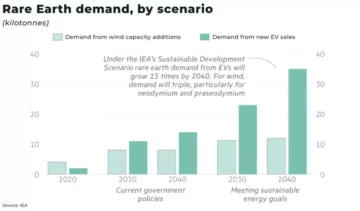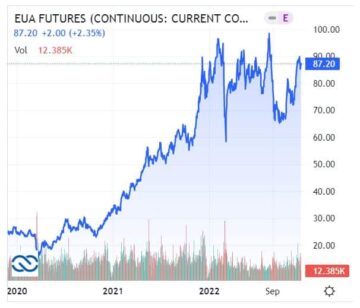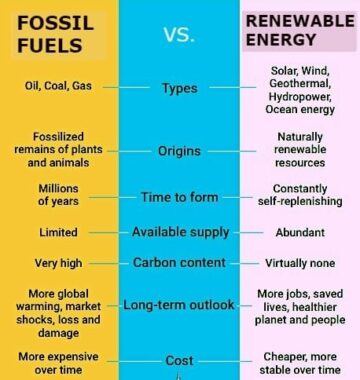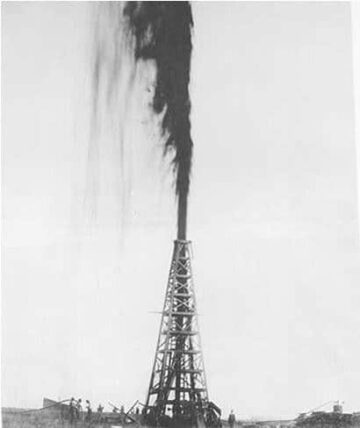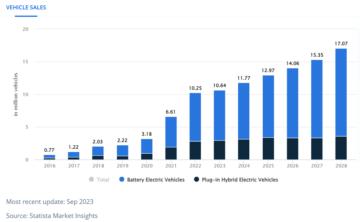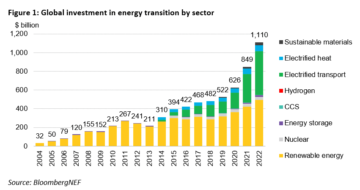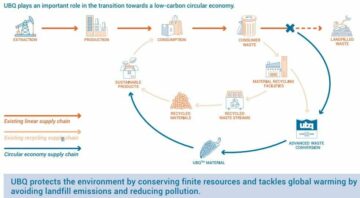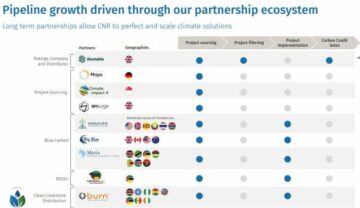Shell retired 20 million tonnes of carbon offsets in 2023, compared with 4.1 million tonnes that were included in its 2022 net carbon intensity. The oil giant will continue its efforts to halve emissions from its operations by 2030, compared with 2016 levels.
Shell’s Energy Transition Strategy
Carbon dioxide emissions from the energy system comprised almost three-quarters of global greenhouse gas emissions in 2023, per Shell’s report.
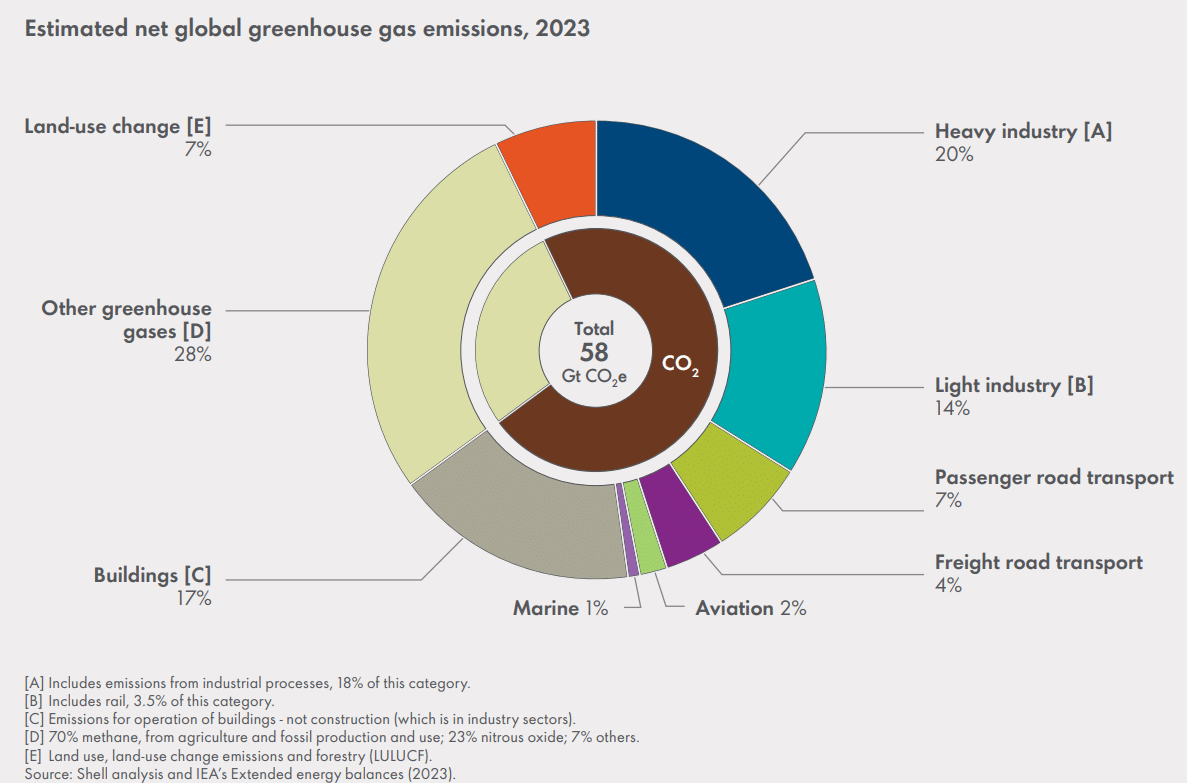

The implementation of stricter government policies could facilitate a reduction in carbon emissions at a pace aligning with the temperature objectives outlined in the Paris Agreement. Even without such policies, estimates say that global demand for fossil fuels would decrease from the current level of about 80% to below 70% by 2040.
Should the world adopt a trajectory towards achieving net zero emissions by 2050, this figure could drop to 50%. This shift will be primarily driven by the increased adoption of electrification and the expansion of renewable energy generation.
In its recently released first Energy Transition Strategy 2024 update, Shell revealed a new ambition to decrease customer emissions resulting from the use of its oil products by 15-20% by 2030 compared to 2021 levels.
The report also underscores the company’s commitment to achieving net zero emissions across all operations and energy products by 2050 as seen below.
Shell Net Zero Target
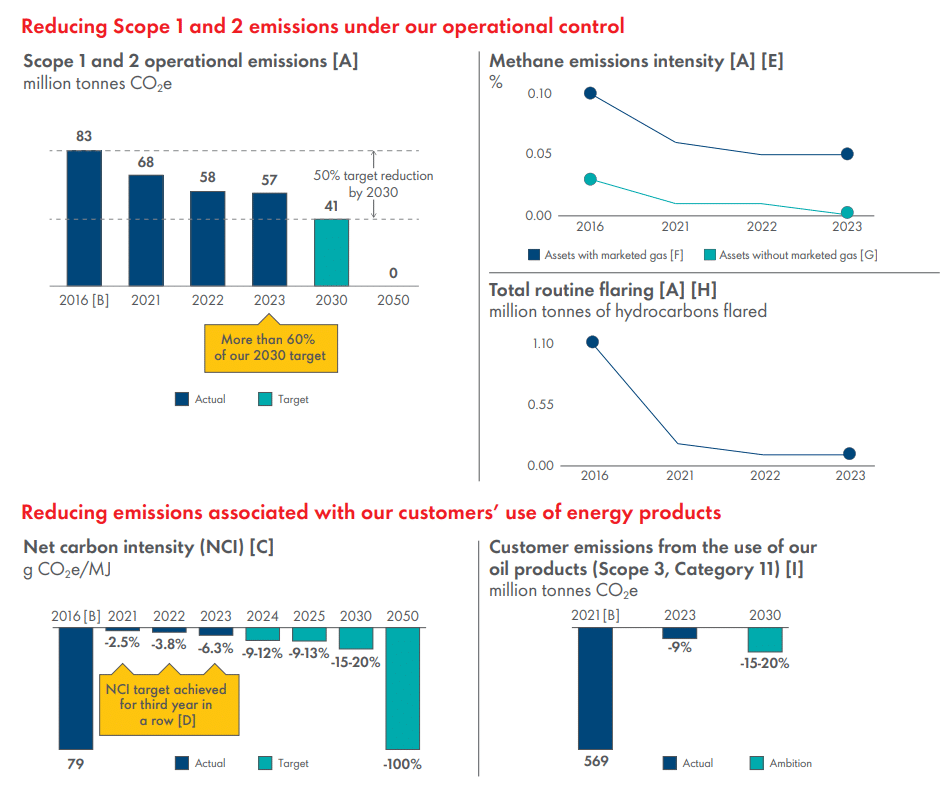
Wael Sawan, Shell’s Chief Executive Officer, highlighted the pivotal role of energy in development and emphasized Shell’s dedication to providing both present energy needs and building a low-carbon energy system for the future. The strategy focuses on performance, discipline, and simplification to maximize impact throughout the energy transition while creating value for investors and customers. Sawan further noted that:
“By providing the different kinds of energy the world needs, we believe we are the investment case and the partner of choice through the energy transition.”
Progress in Action
The update outlines Shell’s progress in various areas:
- Reduction in Emissions: By the end of 2023, Shell had achieved over 60% of its target to halve emissions from its operations, also known as Scope 1 and 2 emissions, by 2030 compared to 2016 levels. Notably, the company exceeded targets set by signatories to the Oil and Gas Decarbonization Charter agreed at COP28.
RELATED: Oil & Gas Firms to Emit 150B Metric Tons of Carbon Pollution
- Methane Emissions Reduction: Shell achieved 0.05% methane emissions intensity in 2023, significantly below its target of 0.2%.
- Carbon Intensity Reduction: Shell achieved a 6.3% reduction in the net carbon intensity of energy products sold in 2023 compared to 2016. This is the third consecutive year of hitting this target.
The oil major aims to focus on markets and segments where it can add the most value. These include the expansion of renewable power in key regions such as Australia, Europe, India, and the USA.
Consequently, there will be a lower total growth of power sales by 2030, leading to an update in the net carbon intensity target, now targeting a 15-20% reduction.
To support its transition to a net zero emissions energy business, Shell plans to invest $10-15 billion between 2023 and the end of 2025 in low-carbon energy solutions.
Last year, Shell invested over $5 billion on these solutions, which is over 23% of its total capital spending. These investments include electric vehicle charging infrastructure, biofuels, renewable power, hydrogen, and carbon capture and storage technologies.
Shell aims to scale up these technologies to make them more affordable for customers. The energy company also advocates for policies supporting national net zero goals, including carbon pricing.
Shell’s Strategic Shifts and Sustainable Practices
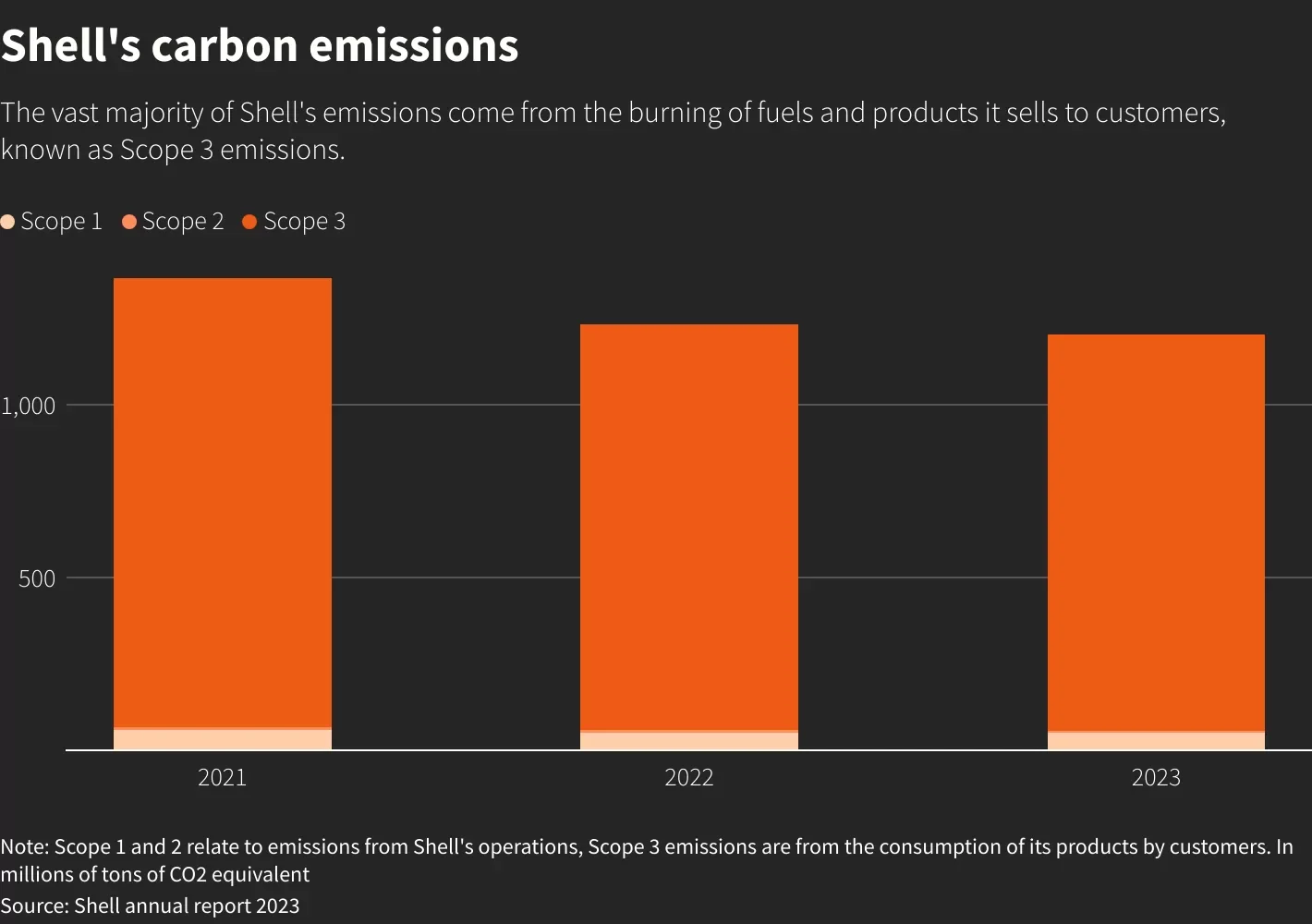
In 2023, Shell’s net carbon intensity accounted for 20 million carbon credits, of which 4 million were linked to energy products. Of the 20 million retired carbon credits, 85% were certified by Verra, 9% by the American Carbon registry, 6% by Gold Standard, and less than 1% via Australian Carbon Credit Units.
Europe’s largest oil major discreetly abandoned its plan to allocate $100 million annually to carbon credits last year. Shell’s plan, by far, is the largest carbon offset program among corporations, announced 6 months after Wael Sawan became the CEO.
Sawan unveiled a significant strategy shift for Shell, indicating the company’s intention to sustain its current level of oil production until 2030. The revised strategy prioritizes cost reduction and enhancing shareholder profits.
Oil majors have faced growing investor pressure to prioritize their most profitable ventures, particularly following periods of robust profits alongside declining returns from renewable energy ventures.
As the world’s largest liquefied natural gas (LNG) trader, Shell emphasized its belief in gas and LNG’s pivotal role within the energy transition. It remarked that these energy resources are vital alternatives to harmful carbon sources in power plants.
The oil giant earned a net profit of $28 billion in 2023 amid strong LNG and oil sales.
In conclusion, Shell’s energy transition update reflects its commitment to reducing emissions, investing in low-carbon solutions, and driving sustainable energy practices to achieve its net zero emissions target by 2050.
- SEO Powered Content & PR Distribution. Get Amplified Today.
- PlatoData.Network Vertical Generative Ai. Empower Yourself. Access Here.
- PlatoAiStream. Web3 Intelligence. Knowledge Amplified. Access Here.
- PlatoESG. Carbon, CleanTech, Energy, Environment, Solar, Waste Management. Access Here.
- PlatoHealth. Biotech and Clinical Trials Intelligence. Access Here.
- Source: https://carboncredits.com/shell-retired-20-million-carbon-offsets-in-2023-weakens-2030-climate-goal/
- :is
- :where
- $100 million
- $UP
- 1
- 2%
- 20
- 2016
- 2021
- 2022
- 2023
- 2025
- 2030
- 2040
- 2050
- 4
- 6
- a
- About
- accounted
- Achieve
- achieved
- achieving
- across
- add
- adopt
- Adoption
- advocates
- affordable
- After
- agreed
- Agreement
- aims
- aligning
- All
- allocate
- almost
- alongside
- also
- alternatives
- ambition
- American
- Amid
- among
- an
- and
- announced
- Annually
- ARE
- areas
- AS
- At
- Australia
- Australian
- BE
- became
- belief
- believe
- below
- between
- Billion
- both
- Building
- business
- by
- CAN
- capital
- capture
- carbon
- carbon capture
- carbon credits
- carbon emissions
- Carbon Offsets
- case
- ceo
- Certified
- charging
- chief
- Chief Executive
- chief executive officer
- choice
- Climate
- commitment
- company
- Company’s
- compared
- Comprised
- conclusion
- consecutive
- continue
- Corporations
- Cost
- cost reduction
- could
- Creating
- Creating Value
- credit
- Credits
- Current
- customer
- Customers
- decarbonization
- Declining
- decrease
- dedication
- Demand
- Development
- different
- discipline
- driven
- driving
- Drop
- earned
- efforts
- electrification
- Emissions
- emphasized
- end
- energy
- Energy Solutions
- enhancing
- estimates
- Ether (ETH)
- Europe
- Even
- exceeded
- executive
- Executive Officer
- expansion
- faced
- facilitate
- false
- far
- Figure
- firms
- First
- Focus
- focuses
- following
- For
- For Investors
- fossil
- fossil fuels
- from
- fuels
- further
- future
- GAS
- generation
- giant
- Global
- goal
- Goals
- Gold
- Gold Standard
- Government
- greenhouse gas
- Greenhouse gas emissions
- Growing
- Growth
- had
- harmful
- Have
- Highlighted
- hitting
- HTTPS
- Impact
- implementation
- in
- include
- included
- Including
- increased
- india
- indicating
- Intention
- Invest
- invested
- investing
- investment
- Investments
- investor
- Investors
- IT
- ITS
- Key
- kinds
- known
- largest
- Last
- Last Year
- leading
- less
- Level
- levels
- linked
- lng
- low-carbon
- lower
- major
- Majors
- make
- Markets
- max-width
- Maximize
- methane
- methane emissions
- metric
- million
- months
- more
- most
- National
- Natural
- Natural Gas
- needs
- net
- New
- notably
- noted
- now
- objectives
- of
- Officer
- offset
- offsets
- Oil
- Oil and Gas
- on
- Operations
- outlined
- outlines
- over
- Pace
- paris
- Paris Agreement
- particularly
- partner
- per
- performance
- periods
- pivotal
- plan
- plans
- plants
- plato
- Plato Data Intelligence
- PlatoData
- policies
- power
- power plants
- practices
- present
- pressure
- pricing
- primarily
- Prioritize
- prioritizes
- Production
- Products
- Profit
- profitable
- profits
- Program
- Progress
- providing
- recently
- reducing
- reducing emissions
- reduction
- reflects
- regions
- registry
- released
- remarked
- Renewable
- renewable energy
- report
- Resources
- resulting
- returns
- Reuters
- Revealed
- robust
- Role
- s
- sales
- say
- Scale
- scope
- seen
- segments
- set
- shareholder
- Shell
- shift
- Shifts
- Signatories
- significant
- significantly
- simplification
- sold
- Solutions
- Sources
- Spending
- standard
- storage
- Strategic
- Strategy
- stricter
- strong
- such
- support
- Supporting
- sustainable
- Sustainable Energy
- system
- Target
- targeting
- targets
- Technologies
- than
- that
- The
- The Future
- the world
- their
- Them
- There.
- These
- Third
- this
- Through
- throughout
- to
- tons
- Total
- toward
- towards
- trader
- trajectory
- transition
- true
- underscores
- units
- until
- unveiled
- Update
- USA
- use
- value
- various
- vehicle
- Ventures
- via
- vital
- we
- webp
- were
- which
- while
- will
- with
- within
- without
- world
- world’s
- would
- year
- zephyrnet
- zero

